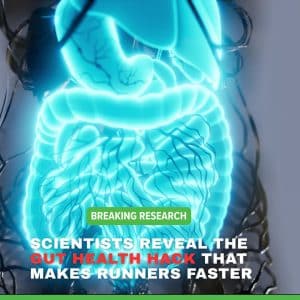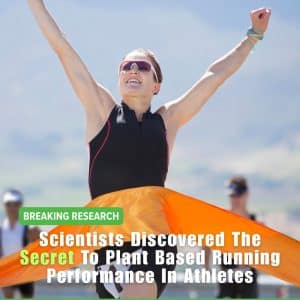The Female Athlete Triad was originally defined as the interrelationship between disordered eating, amenorrhea and osteoporosis in active women.
In 2007, the American College of Sports Medicine broadened the criteria — it now includes low-energy availability (with or without eating disorders), disturbed menstruation (including amenorrhea) and bone mineral density (BMD) decline, an osteoporosis precursor.
An estimated one to five percent of active females experience all three symptoms while twenty to twenty-five percent have at least one. The most easily recognizable component is perhaps athletic amenorrhea, which is reported in 60 – 66 percent of women, with the highest prevalence in runners.
Despite the importance of understanding the causes and consequences of the Female Athlete Triad, studies have shown that a significant portion of female athletes are unaware of the condition and connection between energy deficiency, menstrual dysfunction and bone health.
Furthermore, a widespread belief that irregular periods or loss of periods is a normal part of sport and training prohibits awareness further.
To help educate our female readers and help keep you healthy, we’re going to look at amenorrhea in more depth and show you effective methods to both treat and avoid.
Amenorrhea causes
Amenorrhea is defined as the absence of menstruation, or the monthly period. Primary amenorrhea is diagnosed when a young woman fails to reach menarche by an expected age or by the time other changes associated with puberty have occurred. Secondary amenorrhea is the menstruation absence for three or more consecutive cycles (~90 days) following menarche. Athletic amenorrhea is used to describe the imbalance when it relates to sports or training regimens.
The female reproductive system is highly sensitive to internal and external influences, including body weight, body composition, training and competition physical and mental stresses, and energy imbalance.
It was previously thought that menstruation was disturbed or lost when a woman’s body fat declined below a healthy percentage. More recent research, however, has identified low-energy availability, regardless of body weight or body fat, as the main trigger.
Energy availability is the amount remaining after fueling the body’s vital functions and training expenditure. (Energy availability = dietary energy intake – exercise induced energy expenditure). Any leftover powers less vital bodily functions such as cellular maintenance and growth, thermoregulation, and reproduction.
An athlete can maintain her body weight even when energy availability is low because the body compensates by lowering metabolism and the amount of energy utilized in cellular maintenance and reproduction. Therefore amenorrhea can be the overt signal that that the energy intake level is insufficient for meeting all of the body’s demands.
How exactly are energy availability and reproduction associated? The normal secretion of hormones from the hypothalamus, including estrogen, a hormone that helps regulate the menstrual cycle, requires energy that when denied, interrupts normal menses. The cause explains the other term for the condition, functional hypothalamic amenorrhea.
Consequences of amenorrhea
The most significant impact of amenorrhea is degradation of bone tissue since estrogen plays a crucial role in its maintenance. When estrogen levels are low, calcium is leeched from the bone in order to maintain normal levels of calcium in the blood and perform important physiological functions in the body.
Bone mineral density (BMD) is a measure of the amount of mineral, such as calcium, in the bone. There is a direct correlation between the length of time of amenorrhea and reduction in BMD. To put it another way, the more menstrual cycles an athlete misses, the more their BMD will decline and this loss in BMD may not be fully reversible. As BMD decreases, the risk for stress fractures, osteopenia, and osteoporosis increases. In fact, the risk for stress fracture is two to four times greater in amenorrheic athletes compared to athletes with normal menstrual cycles.
BMD is also influenced by diet, hormone balance, genetics, and weight-bearing exercise.
It is particularly important for young female athletes to pay close attention to their menstrual cycles and dietary intake because up to 90 percent of peak bone mass is reached by age 18.
Cardiovascular health is also impacted by estrogen depletion by impairing endothelium-dependent vasodilation. Blood vessel dilation is important for exercise capacity and essential for optimal heart function. Furthermore, estrogen deficiency may cause an unfavorable lipid panel (high LDL and total cholesterol, low HDL), a risk factor for atherosclerosis and cardiovascular disease.
Treatment
The aim for amenorrhea treatment is restoring normal menstrual function and preventing long-term harm, like osteoporosis.
Appropriate treatment would depend on the predisposing causes. For example, treatment of an eating disorder requires more intensive therapy and should begin with termination of exercise and referral to the appropriate health professionals. Correction of simple energy imbalance, on the other hand, can be remedied by improved dietary habits.
The first step in treatment should be increasing caloric intake and reducing exercise duration and intensity. This would improve energy availability and provide enough energy to regain reproductive function.
A 2002 review of amenorrhea recommends taking one rest day per week with no exercise and increasing caloric intake by 200-300 calories per day.
In addition, increasing the intake of calcium, vitamin D, iron, zinc, and the B vitamins should help correct any nutrient deficiencies that may have developed. Aim to achieve a calcium intake of 1500 mg/d and a vitamin D intake of 600-800 IU/d through diet or supplements.
If after six months of proper nutrition intervention menstrual function does not return, consider pharmacologic therapy. The most common methods are hormone replacement therapy (HRT) and oral contraceptives.
Both methods result in the restoration of estrogen, which reestablishes the preservation of BMD.
Although HRT and oral contraceptives help maintain BMD and prevent further bone loss, their use for amenorrhea treatment remains controversial.
For starters, there is no conclusive evidence that either pharmacologic agent has an effect on increasing BMD. This is especially important for younger athletes who have yet to reach their peak BMD.
They may be taking an oral contraceptive and getting their monthly period, thus believing that they are in positive energy balance and their BMD is not at risk.
However, their diet may not be providing enough to help them reach peak bone mass and they may simply just be maintaining only what has yet developed. Achieving monthly periods without the use of an oral contraceptive is a key way to tell if you are achieving energy balance.
An overview
- There are many causes of amenorrhea. Just because you are a runner doesn’t mean you can automatically conclude the cause is low-energy availability. Be sure to see your doctor and rule out pregnancy and other causes of amenorrhea first.
- Do not stop taking oral contraceptives if you are sexually active. If you are concerned about your energy intake and/or bone health, discuss these concerns with your physician and work together to determine the best treatment.
- Eating disorders are serious health conditions that should be treated only by trained medical, mental, behavioral, and nutrition professionals. For resources, go to The National Eating Disorders Association (NEDA).
References
Nattiv A, et al. The American College of Sports Medicine (ACSM) position stand. The female athlete triad. Journal of the American College of Sports Medicine, 2007.
Miller SM, Kukuljan S, Turner A, et al. Energy deficiency, menstrual disturbances, and low bone mass: what do exercising Australian women know about the female athlete triad? International Journal of Sport Nutrition and Exercise Metabolism, 2012; 22:131-138.
Lynch SL, Hoch AZ. The female runner: gender specifics. Clinical Journal of Sports Medicine, 2010; 29:477-498.
Roupas ND, Georgopulous NA. Menstrual function in sports. Hormones, 2011; 10(2):104-116.
Manore MM. Dietary recommendations and athletic menstrual dysfunction. Clincal Journal of Sports Medicine, 2002;32:887–901.





One Response
Hi!
A very interesting and well written article, thank you for that! I got a question though; how long do you need to be without the menstruation before you start to loose bone mass? I do understand that it is difficult for you to answer that, but maybe you can give me a hint. Are we talking about 1-6 months or + 12 months?
Carima